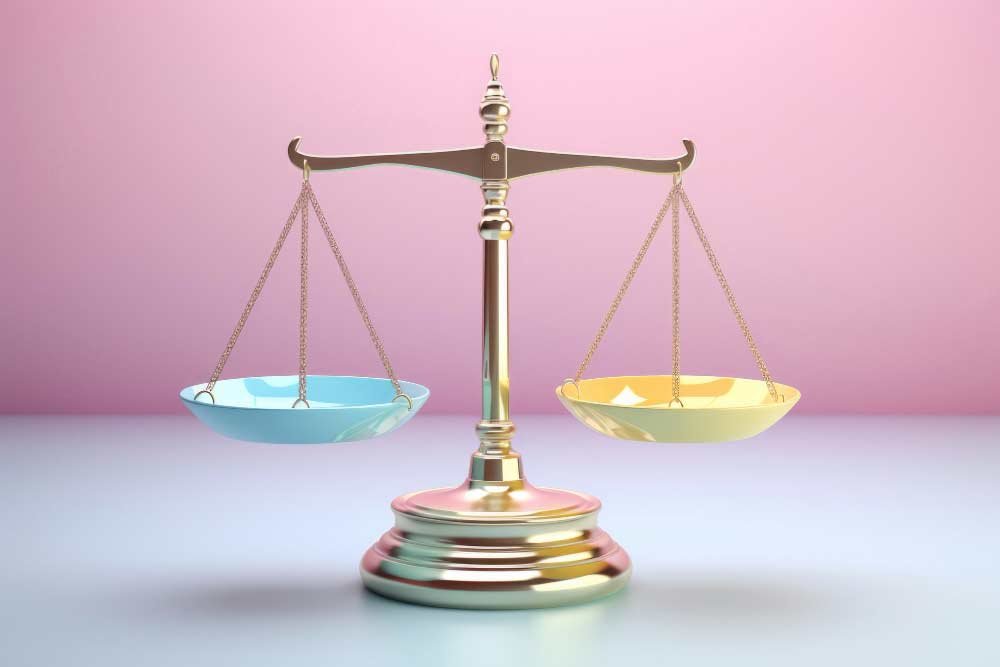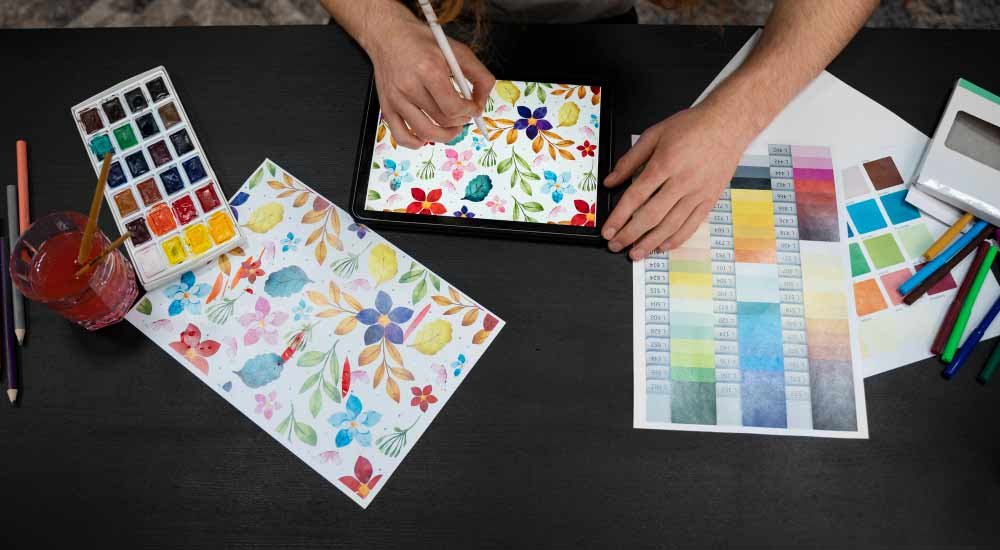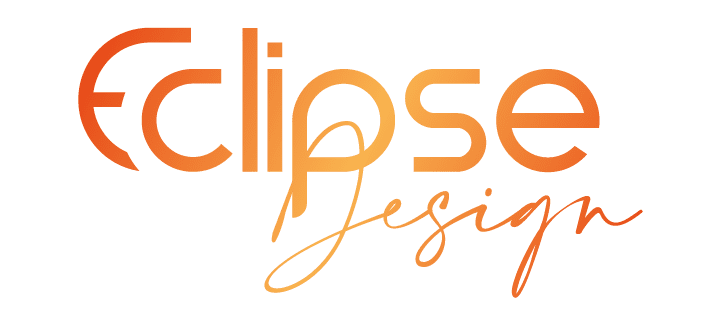- Related Categories: Graphic Design, Graphic Design Tips, How To
Table of Contents

Graphic design is an art form that involves the creation of visual compositions using various elements like shapes, color, typography, and forms. It is a powerful tool that allows designers to communicate messages, evoke emotions, and engage audiences. To truly excel in graphic design, it is essential to understand the fundamental principles and techniques that underpin the field.
In this guide, we will explore the perspectives in graphic design that beginners should be aware of. We will delve into the importance of balance, the use of shapes and forms, the power of color, the art of typography, the principles of composition, the significance of visual hierarchy, designing for different mediums, the impact of user experience, and the role of branding. By the end of this guide, you will have a solid understanding of the fundamental concepts and techniques that form the backbone of graphic design.
Understanding Balance

Balance is a fundamental principle in graphic design that refers to the distribution of visual elements within a composition. It is about achieving equilibrium and harmony to create a visually pleasing design. There are several aspects to consider when it comes to balance in graphic design.
The Role of Space
Space plays a crucial role in creating balance in graphic design. It refers to the area between and around elements in a composition. White space, also known as negative space, is the empty space that surrounds and separates design elements. It allows for a visual breathing room and helps highlight key elements. Utilizing space effectively is essential in creating a well-balanced composition.
Creating Visual Harmony
Visual harmony is achieved when all the elements in a design work together in a balanced and cohesive manner. This can be achieved through careful placement of elements, consideration of their size and scale, and the use of color and typography. By creating visual harmony, designers can ensure that their compositions are aesthetically pleasing and easy to understand.
The Art of Alignment
Alignment is another important aspect of balance in graphic design. It refers to the positioning of elements in relation to each other. Aligning elements creates a sense of order and structure within a composition. There are several types of alignment, including left alignment, right alignment, center alignment, and justified alignment. Each type can be used strategically to create balance and visual interest.
Achieving Balance in Graphic Design
Balance can be achieved in different ways depending on the desired effect. There are three main types of balance:
- Symmetrical Balance: Symmetrical balance occurs when elements are evenly distributed on either side of a central axis. It creates a sense of stability and formality. Symmetrical balance is often used in traditional and formal designs.
- Asymmetrical Balance: Asymmetrical balance occurs when elements of varied sizes and visual weight are arranged in a way that creates a sense of balance. It is more dynamic and informal compared to symmetrical balance. Asymmetrical balance is commonly used in modern and contemporary designs.
- Radial Balance: Radial balance occurs when elements radiate from a central point. It creates a sense of movement and energy. Radial balance is often used in designs that aim to convey a sense of rhythm or circular motion.
By understanding the different types of balance and how to achieve them, designers can create compositions that are visually appealing and engaging.
Exploring Shapes and Forms
Shapes and forms are essential elements in graphic design that contribute to the overall visual impact of a composition. They play a significant role in conveying messages and evoking emotions. Understanding the meaning of shapes and how to use them effectively is crucial for designers.
The Meaning of Shapes
Shapes have inherent meanings and associations that can influence how viewers perceive a design. For example, circles often represent unity and wholeness, while squares and rectangles convey stability and order. Triangles can symbolize energy and movement, while organic shapes evoke a sense of nature and fluidity. By using shapes strategically, designers can enhance the message and impact of their designs.
Using Shapes to Convey Messages
When choosing shapes for a design, it is important to consider the message and mood you want to convey. For example, if you are designing a logo for a financial institution, you might opt for square or rectangular shapes to communicate stability and trust. On the other hand, if you are designing a poster for a music festival, you might incorporate more dynamic and organic shapes to convey energy and excitement. The choice of shapes can influence the overall tone and meaning of a design.
Playing with Forms
Forms refer to three-dimensional shapes that have depth and volume. By incorporating forms into a design, designers can add a sense of realism and depth. Forms can be created through shading, highlights, and shadows. They can be used to create visual interest and draw attention to specific elements within a composition. By experimenting with different forms, designers can create visually engaging and dynamic designs.
The Power of Color

Color is a powerful tool in graphic design that can evoke emotions, communicate messages, and create visual impact. Understanding color psychology and how to use color effectively is essential for designers.
Understanding Color Psychology
Color psychology is the study of how colors affect human behavior and emotions. Different colors have different meanings and associations. For example, red is often associated with passion and energy, while blue is associated with calmness and trust. It is important to understand that some colors can have multiple associations like the color red: passion or anger. Moreover, every culture has different meanings for each color and it is important for designers to conduct color research before any design work. By understanding the psychological effects of colors, designers can use them strategically to create the desired emotional response in viewers.
Choosing the Right Color Palette
When choosing a color palette for a design, it is important to consider the message and mood you want to convey. Warm colors like red, orange, and yellow can create a sense of energy and excitement, while cool colors like blue, green, and purple can evoke a sense of calmness and tranquility. By selecting the right colors, designers can enhance the overall impact and effectiveness of their designs.
Color in Branding
Color plays a crucial role in branding. Brands often use specific colors to create a strong visual identity and evoke certain emotions in their target audience. For example, red is commonly associated with fast-food chains like McDonald’s and KFC, conveying a sense of energy and urgency. By incorporating colors strategically into their branding, companies can create a strong and memorable visual presence.
Typography: The Art of Text

Typography is the art of arranging and styling text in a visually appealing and effective way. It plays a crucial role in graphic design, as it communicates messages, sets the tone, and enhances the overall visual impact of a composition.
The Role of Typography
Typography is not just about choosing the right font; it is about using fonts creatively to convey the intended message. Different fonts have different personalities and evoke different emotions. For example, serif fonts are often associated with tradition and elegance, while sans-serif fonts are more modern and straightforward. By carefully selecting and combining fonts, designers can enhance the overall aesthetic and tone of their designs.
Choosing the Right Fonts
When choosing fonts for a design, it is important to consider readability and legibility. Fonts should be easy to read, even at small sizes or from a distance. Additionally, fonts should align with the overall message and mood of the design. For example, a playful and whimsical design might call for a decorative or handwritten font, while a professional and formal design might require a more traditional and clean font. By selecting the right fonts, designers can create visually appealing and effective designs.
Creating Hierarchy with Typography
Hierarchy is the arrangement of elements in a design according to their importance. Typography plays a crucial role in creating a hierarchy within a composition. By varying the size, weight, and style of fonts, designers can guide viewers’ attention and emphasize key elements. For example, larger and bolder fonts can be used to highlight headlines or valuable information, while smaller and lighter fonts can be used for supporting text. By using typography strategically, designers can create visually engaging and well-structured compositions.
Mastering Composition

Composition is the arrangement of visual elements within a design. It is the foundation of a successful graphic design and plays a crucial role in creating a visually appealing and effective composition.
The Basics of Composition
A well-composed design is balanced, harmonious, and visually engaging. There are several principles that guide the composition process, including:
- Rule of Thirds: The rule of thirds divides a composition into nine equal parts using two horizontal and two vertical lines. Placing key elements along these lines or at their intersections can create a visually pleasing and balanced composition.
- Golden Ratio: The golden ratio is a mathematical concept that can be used to create aesthetically pleasing compositions. It is a ratio of approximately 1.618:1 and is found in various natural and architectural structures. By incorporating the golden ratio into a design, designers can create visually pleasing and harmonious compositions.
- Leading Lines: Leading lines are lines within a composition that guide the viewer’s eye towards a specific element or point of interest. They can be actual lines or implied lines created by the arrangement of elements. By using leading lines strategically, designers can create a sense of movement and direct the viewer’s attention.
- Framing: Framing involves using elements within a composition to create a frame around the main subject. This can add depth, focus, and visual interest to a design. By framing key elements, designers can draw attention and create a visually engaging composition.
Creating Focal Points
A focal point is the main point of interest within a composition. It is the element that draws the viewer’s attention first and holds their gaze. To establish a strong focal point, designers leverage various elements such as color, size, contrast, and placement. For instance, using a vibrant and contrasting color for a specific element amidst a neutral background can instantly make it stand out. Additionally, employing a larger or bolder font for a headline or essential information can emphasize its significance within the overall design.
By creating a strong focal point, designers can ensure that their message is effectively communicated, and that the composition is visually engaging. Thoughtful placement and strategic use of visual elements ensure that the focal point aligns with the overall design narrative, allowing viewers to engage with the content in a purposeful manner. Whether through color manipulation, size differentiation, or clever positioning, the mastery of creating focal points is pivotal in conveying hierarchy and emphasizing key elements within graphic design compositions.
Using Grids for Layout
Grids are a valuable tool in graphic design that helps create structure and organization within a composition. They provide a framework for arranging elements and ensure that each component within the design aligns harmoniously, creating a cohesive and professional aesthetic. By dividing the canvas into columns and rows, designers gain a systematic structure that streamlines the arrangement of text, images, and other visual elements.
Incorporating grids into layout design offers numerous benefits, including improved readability, ease of navigation, and a visually pleasing overall composition. Designers can experiment with different grid configurations to suit the specific needs of the project, adjusting column widths, spacing, and alignments. Whether designing for print or digital media, adherence to a grid system helps maintain a consistent look and feel across various platforms, reinforcing the brand identity. The strategic use of grids empowers designers to strike a balance between creativity and order, allowing for flexibility while ensuring a visually appealing and well-organized final product.
Experimenting with Different Perspectives
Graphic design offers endless possibilities for experimentation and creativity. By exploring different perspectives, designers can create unique and visually striking compositions. This can involve playing with angles, using unconventional layouts, or incorporating unexpected elements. This process allows for the development of unique and visually striking compositions that capture the viewer’s attention.
The essence of experimenting with different perspectives lies in the freedom to break away from conventional design constraints. Designers can employ techniques such as dynamic angles, asymmetrical layouts, or the inclusion of unexpected elements to infuse a sense of excitement and originality into their work. By pushing the boundaries and thinking outside the box, designers can create designs that stand out and make a lasting impression.
The Importance of Visual Hierarchy
Visual hierarchy is the arrangement of elements within a composition in order of their importance. It is a crucial aspect of graphic design that guides the viewer’s attention and ensures that the intended message is effectively communicated.
Understanding Visual Hierarchy
Visual hierarchy is created through size, color, contrast, and placement within a composition. Larger and more prominent elements tend to attract more attention, while smaller and less prominent elements are perceived as less important. By organizing elements in a hierarchical manner, designers can guide the viewer’s eye and create a clear and effective communication hierarchy.
Creating Effective Visual Hierarchies
To create an effective visual hierarchy, designers need to consider the overall message and desired impact of a design. By strategically placing key elements, using contrasting sizes or colors, and adjusting the placement within a composition, designers can ensure that the most important information is easily accessible and stands out. Moreover, on websites, it is crucial to position the most important information at the top of the page. This approach ensures that viewers can readily access the essential details without having to navigate through extraneous content. The placement of crucial information at the outset is a critical aspect of web design that can have a significant impact on the user experience. Prioritizing key information allows graphic designers to improve the usability and effectiveness of their designs. By creating a clear visual hierarchy, designers can guide the viewer’s attention and enhance the overall impact of a composition.
Utilizing Size and Scale
Size and scale play a crucial role in visual hierarchy. Larger elements tend to attract more attention and are perceived as more important. By using size and scale strategically, designers can emphasize key elements and create a strong visual impact. This can involve enlarging important text or graphics, using varying sizes within a composition, or creating contrast between different elements. By utilizing size and scale effectively, designers can enhance the overall visual hierarchy and create compositions that are visually engaging and impactful.
Designing for Different Mediums

Graphic design encompasses a range of mediums, from print to digital. Each medium comes with its own set of considerations and challenges. Designing for different mediums requires an understanding of the specific requirements and limitations of each.
Print vs. Digital
Print design involves creating visuals for physical mediums such as brochures, posters, and packaging. It requires careful consideration of factors such as print resolution, color accuracy (CMYK), and paper choice. Understanding the limitations and capabilities of print technology is essential for ensuring the final product meets expectations and achieves the desired visual impact. Additionally, designers need to account for factors like bleed, trim, and safe zones to ensure that the design translates accurately from screen to print. Print designs need to be created with the final physical product in mind.
Digital design, on the other hand, involves creating visuals for screens, such as websites, social media graphics, and mobile applications. It requires an understanding of user experience (UX), considerations of screen resolutions, responsive design principles, user interaction (UI), and accessibility. Designers must optimize graphics for various devices and screen sizes to ensure a consistent and user-friendly experience across different platforms. Furthermore, digital design offers opportunities for interactivity, animation, and dynamic content, allowing designers to engage audiences in innovative ways. Digital designs need to be adaptable and responsive to different screen sizes and devices.
Designing for Web
Designing for the web involves creating visually appealing and user-friendly websites. It requires an understanding of web design principles, such as usability, accessibility, and responsive design. Designers need to consider factors such as navigation, layout, color scheme, and typography to create engaging and effective web designs.
Designing for Social Media
Social media has become a powerful platform for visual communication. Designing for social media involves creating graphics that are eye-catching, shareable, and optimized for different social media platforms. Designers need to consider factors such as image dimensions, aspect ratios, and branding guidelines to create effective social media graphics. Moreover, users across social media are losing interest in posts fast, less than 5 seconds per post. The designer must find a way to convey the message in this time or create a design that will catch the attention and make the user spend more time on his design.
Designing for Mobile
Mobile design focuses on creating visuals for mobile devices such as smartphones and tablets. It requires an understanding of mobile user behavior and design principles. Mobile designs need to be optimized for smaller screens, touch interactions, and limited bandwidth. Designers need to consider factors such as responsive design, mobile-friendly navigation, and load times to create engaging and user-friendly mobile designs.
The Impact of User Experience
User experience (UX) is a crucial aspect of graphic design that focuses on creating designs that are user-friendly, intuitive, and enjoyable to interact with. Good UX design considers the needs and expectations of the target audience to create designs that are effective and engaging.
Understanding User Experience
User experience is the overall experience a user has when interacting with a design or product. It encompasses factors such as usability, accessibility, and aesthetics. Good UX design involves understanding the target audience, conducting user research, and testing designs to ensure they meet the needs and expectations of users.
Visit the article for a comprehensive understanding of User-Centered Design principles.
Creating Intuitive Designs
Intuitive designs are easy to understand and navigate, even for first-time users. They anticipate user needs and provide clear and logical pathways for interaction. By considering factors such as information architecture, navigation design, and interaction design, designers can create intuitive designs that enhance the user experience.
Designing for Accessibility
Designing for accessibility involves creating designs that are inclusive and can be accessed by all users, regardless of their abilities. This includes considerations like color contrast for visually impaired users, keyboard accessibility for users with motor disabilities, and text alternatives for those with hearing impairments. By designing for accessibility, designers can ensure that their designs are usable and enjoyable for a wide range of users.
The Role of Branding
Branding is the process of creating a unique and recognizable identity for a business, product, or service. It involves various graphic design elements to establish a consistent and cohesive visual presence.
Building a Strong Brand Identity
A strong brand identity is crucial for establishing trust, recognition, and loyalty. It involves creating a visual identity that reflects the values, personality, and unique selling proposition of a brand. This includes elements such as logos, color palettes, typography, and visual style. A strong brand identity is essential for fostering trust, recognition, and loyalty among consumers.
At the core of this process is the development of a visual identity that reflects the brand’s values, personality, and unique selling proposition. Designers must consider elements such as logos, color palettes, typography, and visual style to create a cohesive and memorable brand image. Consistency plays a pivotal role in reinforcing the brand identity, ensuring that all visual elements and messaging align cohesively across various touchpoints. By building a strong brand identity, businesses can differentiate themselves from competitors and create an impression on their target audience.
Consistency in Branding
Consistency is key in branding. It ensures that all visual elements and messaging associated with a brand are cohesive and aligned. Consistent branding helps build recognition and trust among consumers. It involves using consistent colors, typography, imagery, and messaging across all touchpoints, from websites and social media to packaging and advertising. By maintaining consistency in branding, businesses can create a strong and unified visual identity.
The Branding Process
The branding process involves various stages, from research and strategy development to design implementation and evaluation. It includes activities such as market research, competitor analysis, brand positioning, and visual identity design.
- Research and Analysis:
- The first stage of the branding process involves comprehensive research and analysis. This includes market research to understand the target audience, competitor analysis to identify market gaps and opportunities, and a thorough examination of the brand’s strengths, weaknesses, opportunities, and threats (SWOT analysis). By gathering insights into market trends, consumer preferences, and competitor strategies, designers can develop a strategic foundation for the branding efforts.
- Strategy Development:
- With insights from the research phase, the next step is to develop a clear brand strategy. This includes defining the brand’s mission, vision, values, and positioning in the market. Designers work closely with stakeholders to articulate the brand’s unique selling proposition (USP) and identify key messaging points. Establishing a brand strategy provides a roadmap for the visual elements and messaging that will convey the brand’s identity effectively.
- Design Implementation:
- Once the brand strategy is defined, designers begin the process of translating it into visual elements. This includes designing the brand logo, selecting a color palette that aligns with the brand’s personality and values, choosing typography that reflects the brand’s tone and style, and creating visual assets such as imagery and graphics. Designers aim to develop a visual identity that is distinctive, memorable, and consistent across all brand touchpoints.
- Evaluation and Iteration:
- The branding process does not end with the creation of visual assets. It requires ongoing evaluation and iteration to ensure that the brand identity remains relevant and resonates with the target audience. Designers may conduct usability testing, brand audits, and surveys to gather feedback from consumers and stakeholders. Based on this feedback, they make adjustments to the brand identity as needed, refining visual elements and messaging to enhance brand perception and effectiveness.
By following a structured branding process that encompasses research, strategy development, design implementation, and evaluation, designers can create a brand identity that effectively communicates the essence of the brand and fosters connections with consumers.
Tools and Resources
To excel in graphic design, it is important to have access to the right tools and resources. Here are some essential tools and helpful online resources for beginners:
Essential Graphic Design Tools
- Adobe Creative Cloud: Adobe Creative Cloud is a suite of professional design software, including Photoshop, Illustrator, and InDesign. These tools are widely used in the graphic design industry and offer a wide range of features and capabilities.
- Canva: Canva is a user-friendly online design tool that allows beginners to create professional-looking designs without the need for advanced design skills. It offers a wide range of templates, graphics, and fonts.
- Figma: Figma is a collaborative design tool that allows designers to create, share, and collaborate on designs in real-time. It is widely used for web and interface design.
- Sketch: Sketch is a design tool for macOS that is popular among UI and UX designers. It offers a range of features and plugins that facilitate the design process.
Helpful Online Resources
- Behance: Behance is an online platform where designers can display their work and connect with other creatives. It is a reliable source of inspiration and a place to discover modern design trends and techniques.
- Dribbble: Dribbble is a community of designers where they can share their work, receive feedback, and find inspiration. It is a valuable resource for discovering new design styles and trends.
- Smashing Magazine: Smashing Magazine is an online publication that covers various topics related to web design and development. It offers tutorials, articles, and resources for designers and developers.
- Awwwards: Awwwards is a platform that highlights and recognizes the best web design projects. It is a great source of inspiration for web designers looking to stay up to date with the latest trends and techniques.
Conclusion
Graphic design is a dynamic and multifaceted field that requires a solid understanding of fundamental principles and techniques. By exploring the perspectives in graphic design, beginners can gain a comprehensive overview of the subject and develop the skills necessary to create visually engaging and effective compositions. From understanding balance and utilizing shapes to harnessing the power of color and typography, each perspective plays a crucial role in creating impactful designs. By mastering composition, visual hierarchy, and user experience, designers can create designs that effectively communicate messages and engage audiences. And by embracing the role of branding, designers can establish a strong visual identity for businesses and products. Armed with the knowledge and tools provided in this guide, beginners can embark on their journey to becoming skilled graphic designers.
Remember, graphic design is a continuous learning process. Stay curious, explore new perspectives, and never stop honing your skills. With dedication and practice, you can create designs that leave an impression and make an impact in the world of visual communication.
FAQs: Navigating the Path of Graphic Design
What are the fundamental principles of balance in graphic design?
Balance in graphic design involves the distribution of visual elements within a composition to achieve equilibrium and harmony. It includes considerations of space, visual harmony, and alignment. There are three main types of balance: symmetrical, asymmetrical, and radial.
How do shapes and forms contribute to the impact of graphic design?
Shapes and forms play a significant role in conveying messages and evoking emotions in graphic design. They have inherent meanings and associations that influence viewers’ perceptions. By strategically using shapes and forms, designers can enhance the impact and tone of their designs.
Why is visual hierarchy important in graphic design?
Visual hierarchy guides the arrangement of elements within a composition in order of their importance. It is crucial for directing the viewer’s attention and effectively communicating the intended message. Size, color, contrast, and placement are key factors in creating an effective visual hierarchy.
What are the key considerations when designing for different mediums in graphic design?
Designing for print and digital mediums requires distinct considerations. Print design involves factors such as print resolution and paper choice, while digital design focuses on user experience and responsive design principles. Designing for web, social media, and mobile each comes with its own specific requirements and challenges.












